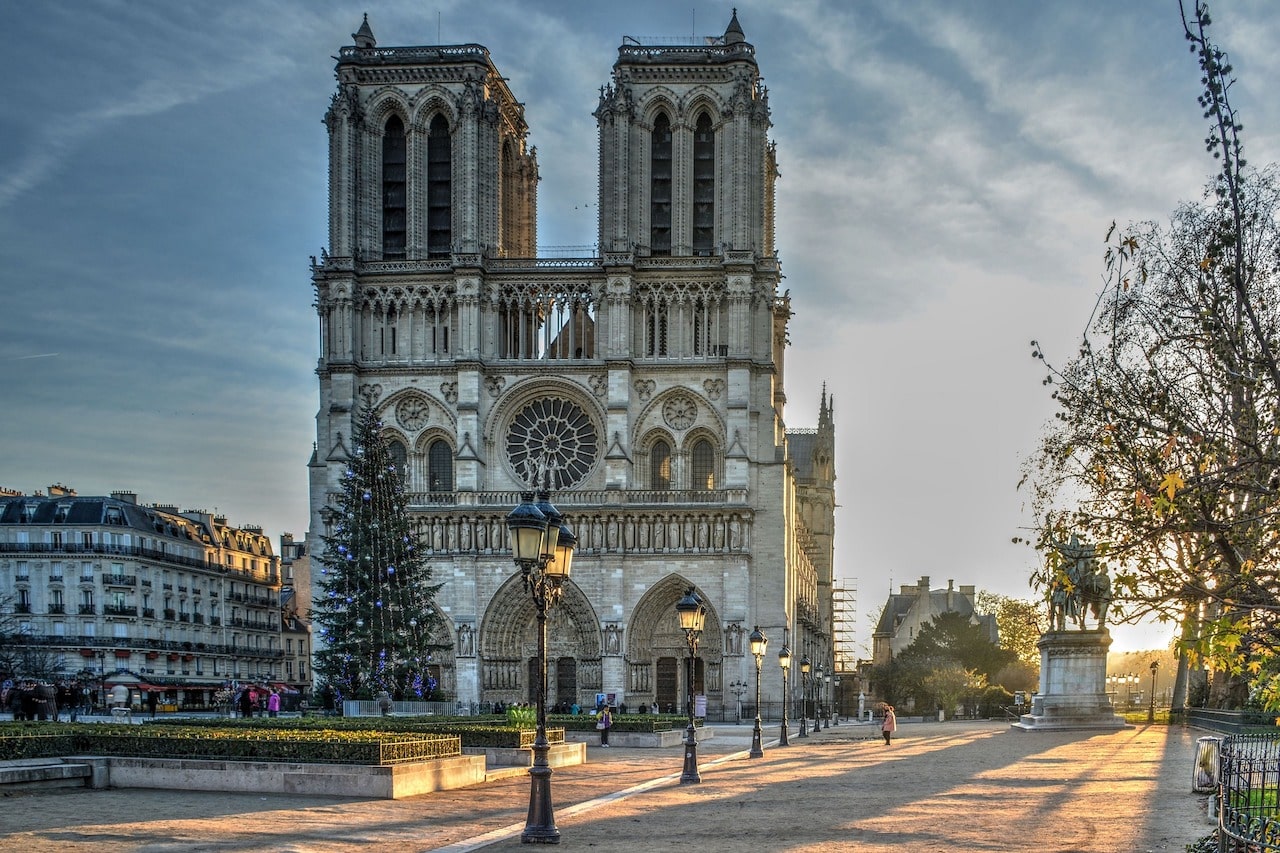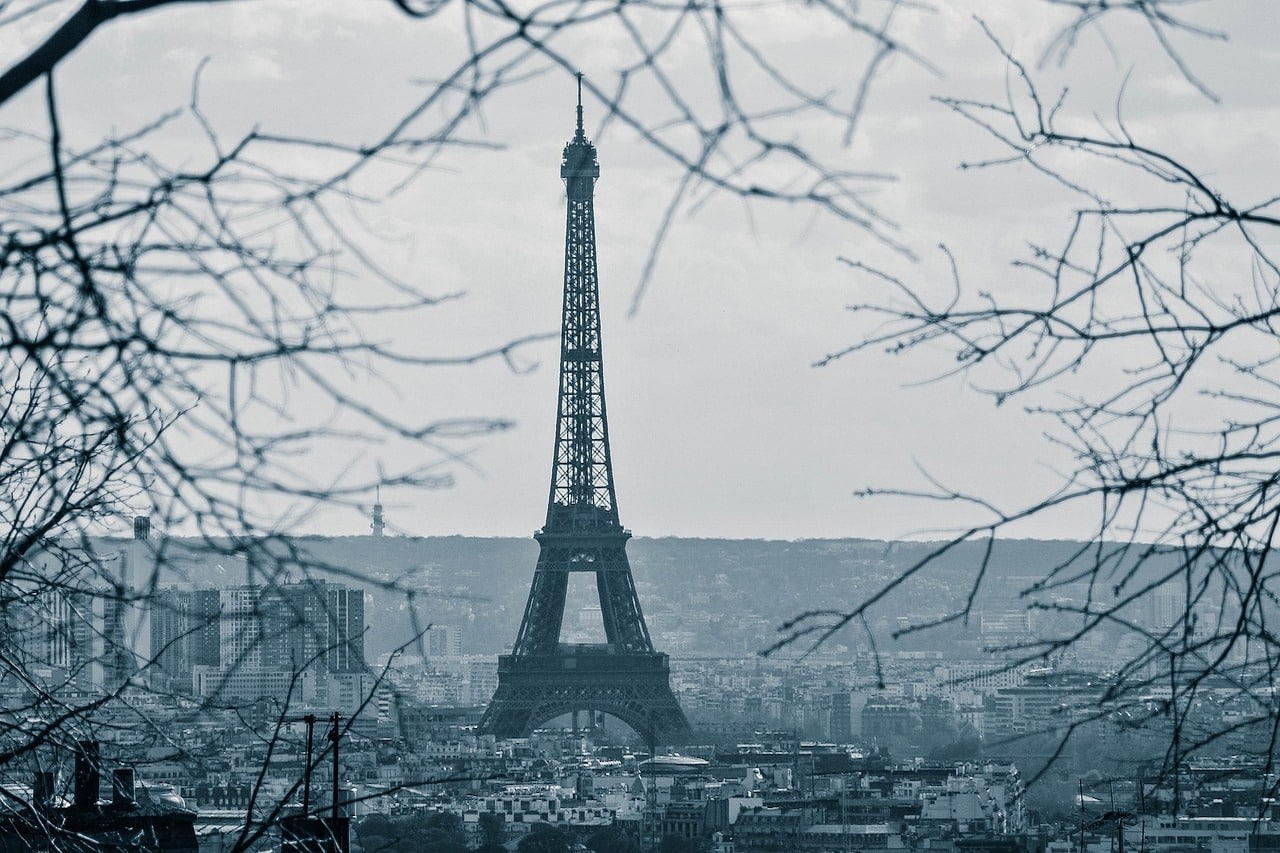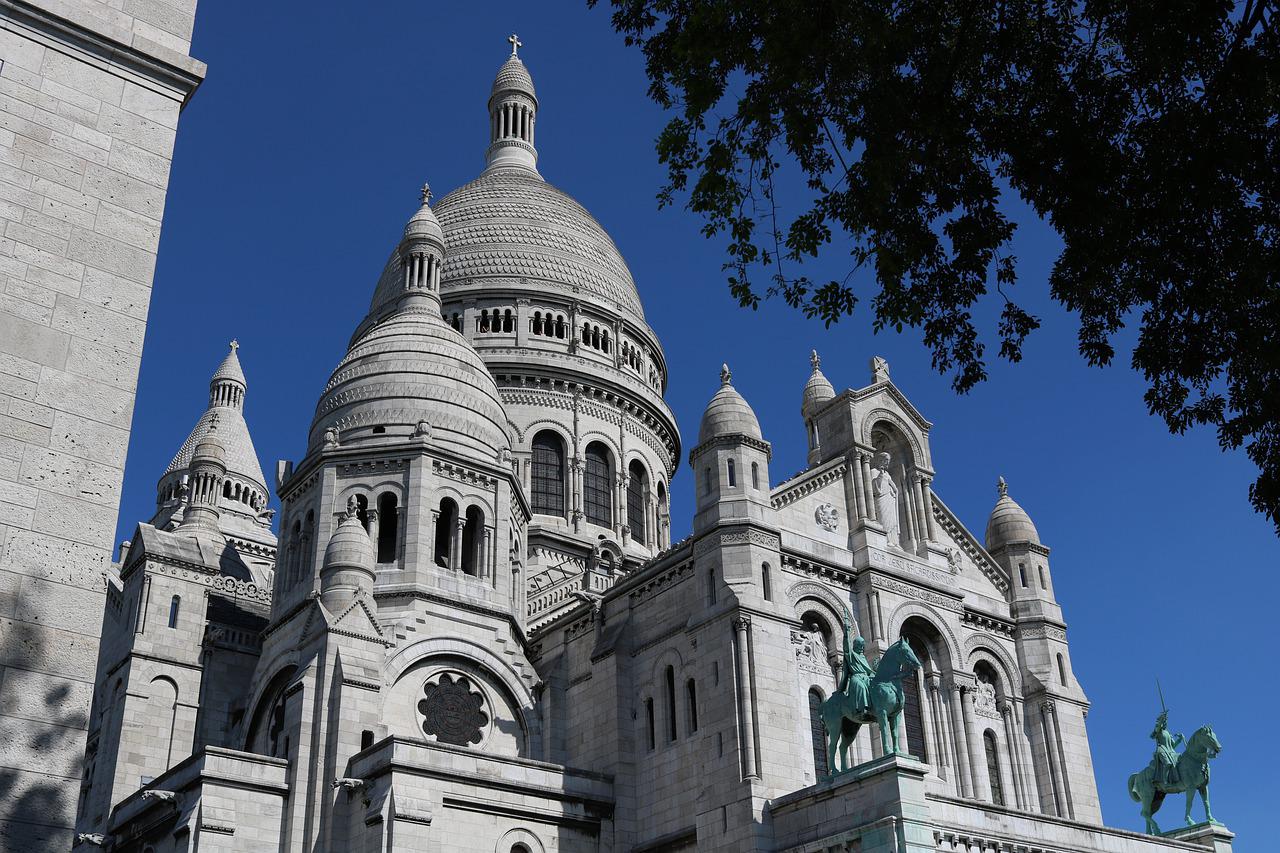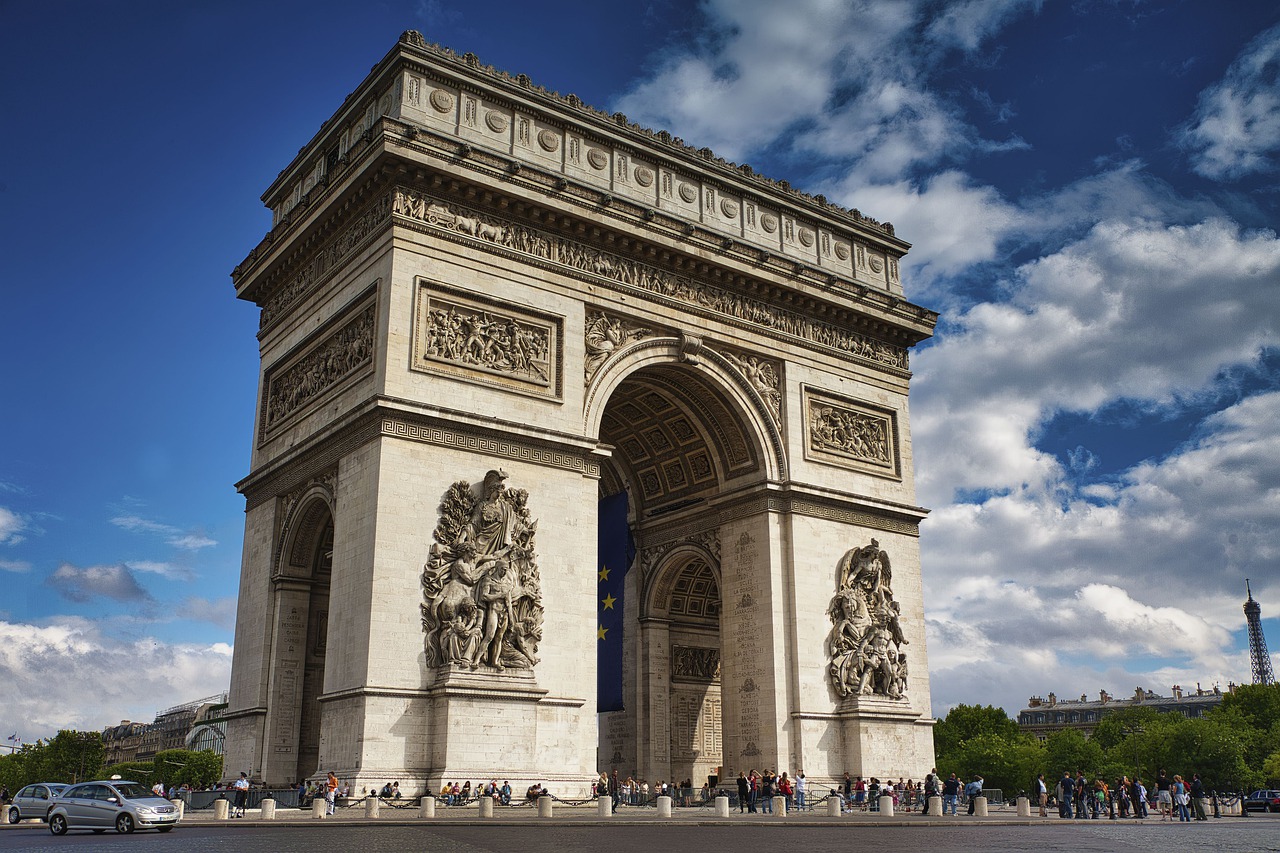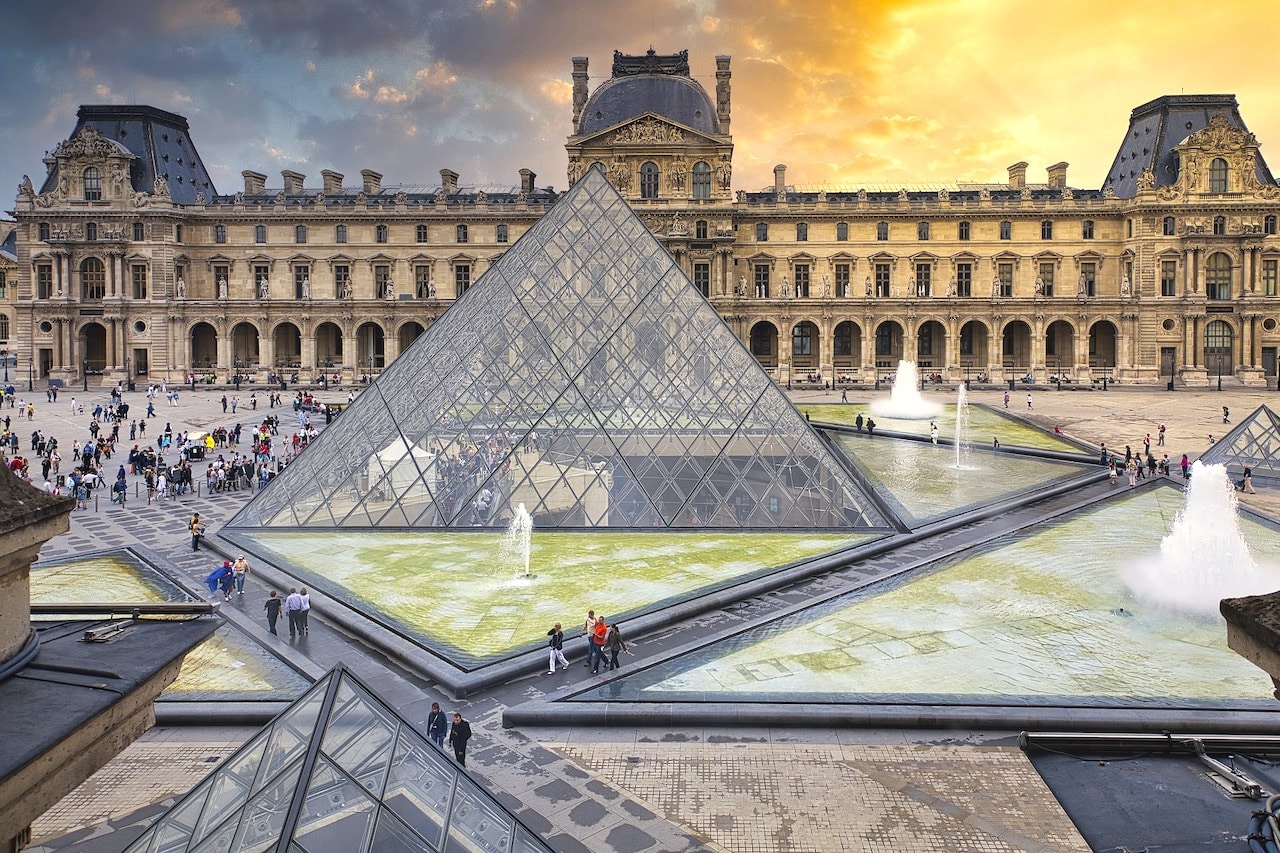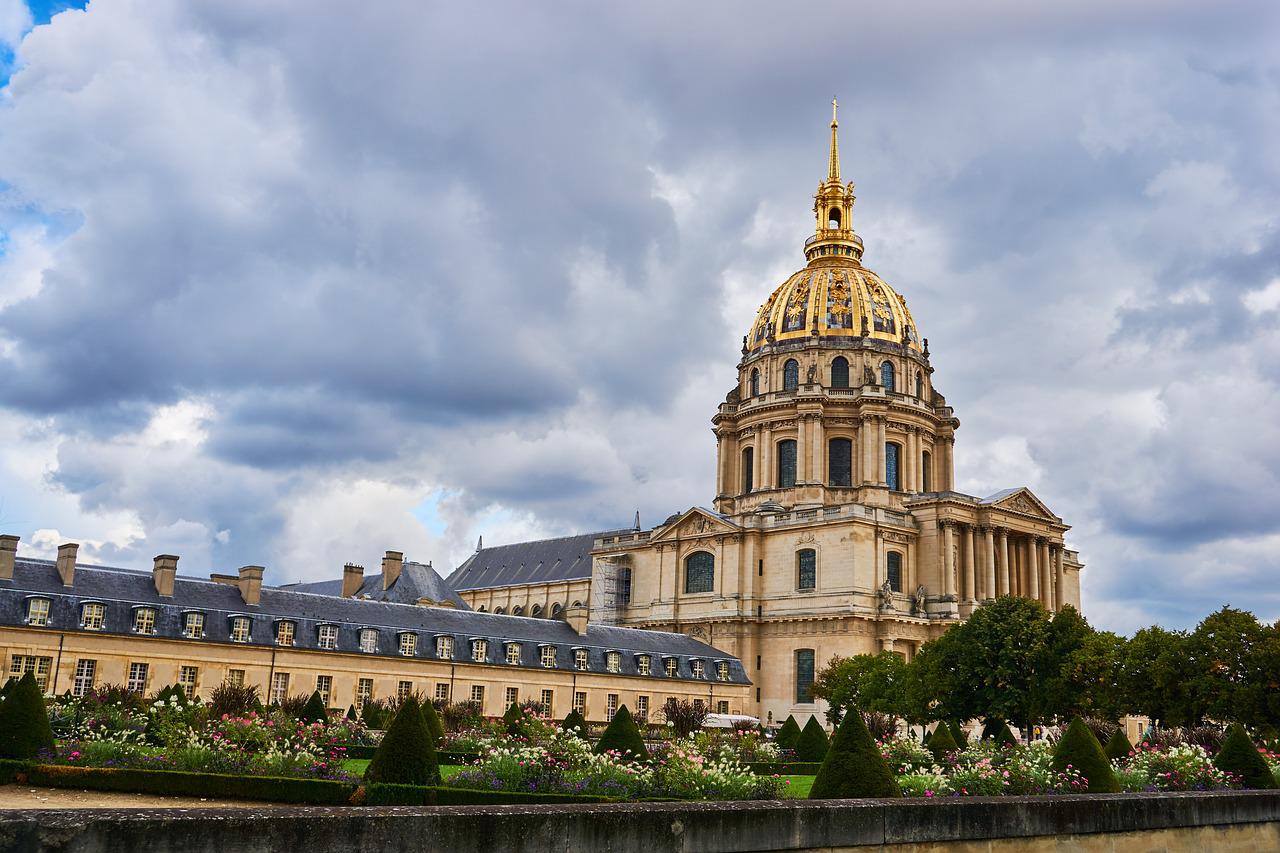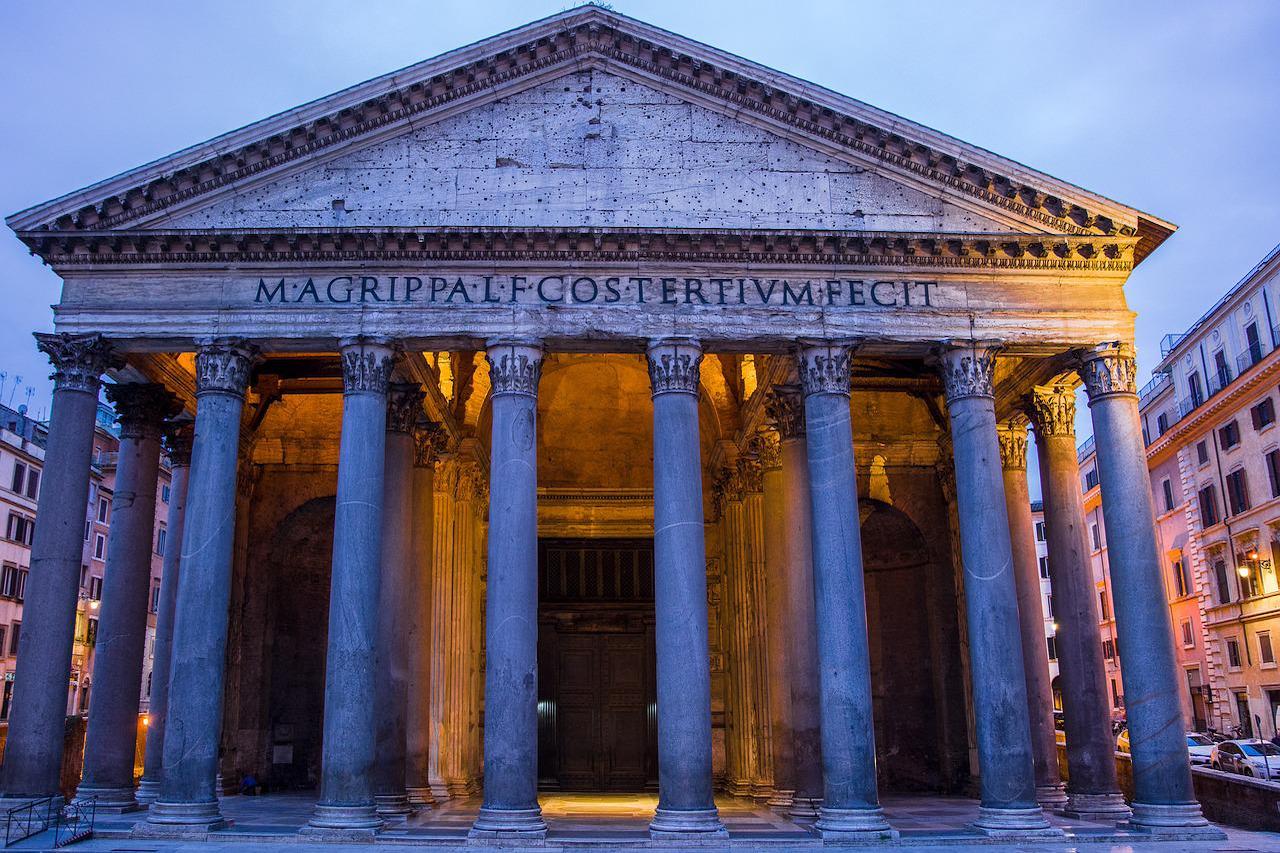Rich of a long past, the city of Paris boasts an exceptional architectural heritage, tourist sites and Parisian monuments that are among the most visited and best known in the world.
We propose to discover in more detail the history of ten monuments not to be missed during a visit in the French capital.
Notre-Dame de Paris Cathedral
The cathedral of Notre-Dame de Paris has long been the most visited monument in the city. Unfortunately, the building was destroyed by a violent fire and is now, for an undetermined period of time, inaccessible to the public.
Notre-Dame was built around the middle of the 12th century on the site of an ancient 4th century church dedicated to Saint-Etienne, itself built on a Gallo-Roman site.
It was the bishop of Paris, Maurice de Sully, who had Notre-Dame built, as the old church no longer met the needs of an ever-growing population.
It took nearly two centuries for the Gothic cathedral, designed to accommodate 9,000 worshippers, to be completely finished. Indeed, if the construction site ends around 1250 with the construction of the side chapels, many adjustments including the harmonization of the facade which originally mixes Romanesque and Gothic are immediately made. New modifications were made under the reign of Louis XIV who ordered the reorganization of the interior of the building.
The Revolution brought its share of misery to the cathedral which successively became a “Temple of Reason” and a warehouse.
Napoleon Bonaparte, wishing to make it the place of his coronation, re-established Notre-Dame in its religious functions and renovations were undertaken in order to welcome this important event. The building was then abandoned and its demolition was considered.
In 1831, Victor Hugo published his novel “Notre-Dame de Paris” which aroused unprecedented interest in the cathedral which was saved. Its restoration was entrusted to Eugène Viollet-le-Duc. Baron Haussmann, charged with modernizing Paris by Napoleon III, did not hesitate to raze buildings deemed too close to the cathedral in order to highlight it.
If Notre-Dame emerged unscathed from the Paris Commune and the World Wars, the spire, roofs and framework were not spared by the fire that broke out accidentally on April 15, 2019.
Eiffel tower
It was 1884 and the project to organize a new World’s Fair in Paris five years later had just been voted. It was a unique opportunity to make this event a showcase for France’s technological know-how. Moreover, this exhibition celebrates the centenary of the French Revolution, so a monument is needed to match.
A competition was launched and the controversial project of two engineers from Gustave Eiffel’s company was chosen.
Construction began in January 1887 and was completed in March 1899, shortly before the opening of the exhibition. The construction of the tower in puddled iron took twice as long as expected, notably because of workers’ strikes, and the budget was largely exceeded, but it was a success, with visitors to the exhibition flocking to climb the “300-meter tower,” the highest monument in the world at the time.
After the event, curiosity waned and visitors became fewer and fewer, which led to the idea of dismantling the tower.
Gustave Eiffel came to the rescue of his “baby” and authorized the installation of a radio and television antenna as well as a weather station.
From the 1960s onwards, foreign tourists arrived in the capital in droves, allowing the tower, renamed the Eiffel Tower, to see its attendance explode. A gourmet restaurant opened its doors while the tower was completely repainted.
Today, nearly 7 million people visit the Eiffel Tower every year, a symbol of Paris and France.
The Basilica of the Sacred Heart of Montmartre
A visit to Paris must include the Basilica of the Sacred Heart of Montmartre, an eclectic building that rises to the top of the Montmartre hill, one of the highest points in the capital.
Recognizable by its dome flanked by four smaller domes that are reminiscent of the Byzantine style and its white color due to the use of travertine, the basilica was built in 1875.
This date was not chosen at random. Indeed, France has just lived through difficult times between the war of 1870 and the Paris Commune, an insurrection of the people violently repressed.
These events led to serious political tensions between Republicans and conservatives.
Moreover, religion was also controversial and the bishop of Nantes went so far as to declare that the defeat of France by Prussia was willed by God in order to punish the nation in the midst of its moral decay.
The construction of the basilica was therefore not insignificant. It should not only impose the policy of “Moral Order” of the conservatives but also restore the image of the church.
Thanks to the vote of the National Assembly, it was declared of public utility, which allowed the archbishop of Paris to buy the necessary land, possibly by expropriation. The choice of the site was indeed made on the hill of Montmartre so that the building would dominate the capital. Moreover, the hill is considered a holy place and it is also where the Commune began in March 1871.
Today, more than 10 million people visit the Sacré-Coeur de Montmartre every year. The less able-bodied can get there by taking the funicular or the bus 40.
The Arch of Triumph
The Arch of Triumph on the former Place de l’Étoile (now Place Charles-de-Gaulle) was built in 1806 by order of Emperor Napoleon Bonaparte after the victory of his troops at the Battle of Austerlitz. He also ordered that the memory of the victories of the French armies be permanently honored there.
However, construction was suspended after the disastrous Russian campaign of 1812 and especially after the first abdication and exile of the emperor on April 6, 1814. It was Louis XVIII who continued the work in 1823 to celebrate the French victory in the Spanish expedition that allowed King Ferdinand VII to return to the throne.
Louis-Philippe and Adolphe Thiers were responsible for the choice of the bas-reliefs that adorn the monument, which was inaugurated in July 1836. On the other hand, the monumental statue planned to overcome the arch was never installed. Only a plaster model was briefly placed on the base in 1882 but had to be removed four years later because of its deterioration.
The flame of remembrance was lit for the first time on November 11, 1923 and has never been extinguished. Every day, at 6:30 pm, a member of a veterans’ or war victims’ association is in charge of rekindling it.
The Louvre Palace
Although everyone knows the Louvre Museum, many people are unaware that the building has long served as a palace for the kings of France.
The first Louvre castle was built at the end of the 12th century by King Philip Augustus, who wished to provide the city of Paris with an important defense system as he prepared to leave on a crusade. This first castle was a square fortress surrounded by a wide moat fed by the Seine. It had not only a defensive function but also the mission to protect the archives and the royal treasure.
It became a royal residence under the reign of Louis IX and was regularly refurbished by his successors before being progressively demolished to make way for the current Louvre Palace.
Abandoned when Louis XIV moved his court to Versailles, the Louvre was occupied by the poorest people in the capital before being used as a place of residence for various academies. The building suffered severe damage.
The palace was saved at the end of the 18th century when the project to transform it into a museum was adopted by the National Assembly, which allowed the works confiscated from the clergy and nobility to be put in a safe place.
Today, this museum houses priceless collections and world famous works such as the Mona Lisa.
If you visit the museum, don’t miss the bases of the dungeon and two walls as well as the Saint-Louis room, remains of the “medieval Louvre”.
The Invalides
The Hôtel des Invalides was built under Louis XIV in order to give a roof to the invalids of the French army and especially to remove from the sight of the passers-by these begging soldiers who were fighting in the streets of the capital. The place chosen for the construction of the buildings is the plain of Grenelle then located in the suburb of the capital.
The Hôtel des Invalides was managed by a governor and served as a hospice, hospital, barracks and place of worship. The maintenance of the soldiers was financed by a levy on the income of the abbeys. The work was completed in 1674.
Concerned about his soldiers, Emperor Napoleon I organized great ceremonies within this institution, notably the first awarding of medals of the Legion of Honor in July 1804. The Bonapartists even obtained the return of the ashes of their emperor to the Invalides in 1840.
Since 1871, the Invalides has also housed an artillery museum which became the army museum in 1905.
Today, the institution still houses about one hundred war invalids from the French army.
The Garnier Opera House
Opera was introduced in France at the instigation of Cardinal Jules Mazarin, who wished to introduce the French to the lyrical works of his country, Italy.
In 1645, the first baroque piece was performed at the Hôtel du Petit-Bourbon in honor of the young king Louis XIV, who was just 7 years old. This event gave birth to the French opera a few years later, even if it is more accurate to speak of “comédie-ballet”, a musical genre born of the collaboration between Lully and Molière.
From that time on, performances were given in different halls.
In 1858, the imperial couple Napoleon III and Eugenie narrowly escaped an attack while visiting the Salle Le Peletier. It became urgent to build a room easier to secure.
Thus, Charles Garnier’s project was unanimously chosen in 1860, while Baron Haussmann assigned a plot of land to the new opera house, which, although eclectic in style, was largely influenced by Baroque art. Garnier also designed the interior decor of the opera house, thinking of every detail to harmonize the whole. It is notably him who designed the great chandelier of eight meters high illuminating the room which can welcome 1.900 spectators.
The Pantheon
Built in the second half of the 18th century in neo-classical style, the Pantheon dominates the eponymous square located in the Latin Quarter.
Originally, the Pantheon was a church dedicated to Sainte-Geneviève and designed by the architect Jacques-Germain Soufflot in an eclectic style combining Gothic, Byzantine, classical and Greco-Roman. The first stone was laid in 1764 and the building was being completed when the revolution broke out.
The church of Sainte-Geneviève becomes the “Pantheon of great men” and is modified accordingly, including removing most of the windows which plunges the interior of the building in the dark.
This pantheon is now intended to accommodate the ashes of French personalities except the military who are buried in the Pantheon of Invalides.
Depending on the regime, the building temporarily becomes a place of worship while sometimes keeping its function as a place of burial. Since 1885, the building is only reserved for the resting place of great men such as Victor Hugo, Louis Braille, Emile Zola, André Malraux, Jean Moulin, Voltaire, Rousseau, Pierre and Marie Curie, the latter being one of the only women to have been admitted to the Pantheon…
The Conciergerie
If the Conciergerie is known for having been the prison of Marie-Antoinette during the Revolution, we often forget that this imposing building was originally a residence of the kings of France.
Indeed, the Conciergerie, the Palais de Justice and the Sainte-Chapelle form the old Palais de la Cité built in the 5th century. At that time, the king’s court was still itinerant and the kings did not reside permanently in Paris. It was not until the Capetians that the fortress on the Île de la Cité was refurbished to make it more suitable for the royal family and courtiers. The palace was rebuilt several times before being abandoned by Charles V the Wise, in the 14th century.
At that time, part of the palace was transformed into a state prison and became the Conciergerie.
The first floor of the building located along the Quai de l’Horloge as well as the two towers became jails while the second floor was reserved for the Parliament. Other institutions such as the Cour des Comptes (Court of Auditors) were also established in the old palace.
The Conciergerie was mainly used during the Revolution and few prisoners came out of its dungeons alive. During this troubled period, the Revolutionary Court as well as the public prosecutor in charge of supervising the police officers moved into the former premises of the Parliament, renamed Salle de la Liberté and Salle de l’Égalité.
The trials became collective and were quickly dispatched in the absence of witnesses or lawyers. Dozens of people accused of being enemies of the Revolution were executed daily as they left the court. 2,780 prisoners were thus guillotined in a few months.
One of the most famous prisoners was Queen Marie-Antoinette of Austria, wife of Louis XVI. She was condemned for high treason on October 16, 1793 and was executed a few hours after the sentence.
The Père Lachaise cemetery
The largest and most famous Parisian necropolis, the Père Lachaise cemetery is home to the tombs of numerous personalities of the Catholic, Orthodox, Protestant, Jewish and Muslim faiths, which explains why it has become one of the most popular tourist sites in Paris.
In 1765, a law forbade the establishment of cemeteries in Paris intra-muros. Very quickly, the existing cemeteries ran out of space. In addition, the Innocents cemetery was permanently closed in 1780 when a wall collapsed due to the weight of the bones and bodies piled above the arches, while the mass grave was already filled beyond its capacity.
It became urgent to evacuate the piled up corpses in order to avoid epidemics. The bones were transported to the old quarries of the Tombe-Issoire, which were transformed into catacombs.
Several cemeteries were created outside Paris, in Montmartre, Montparnasse and Passy.
A fourth plot of land was chosen on Mont-Louis, one of the hills of Paris that had once belonged to the bishop of Paris. The construction of the cemetery was entrusted to the architect Brongniart, who designed it as a vast English garden. It was named Père Lachaise in honor of the confessor of Louis XIV, the Jesuit François d’Aix de La Chaise.
Until 1815, the cemetery was only lightly occupied when the prefect of Paris decided to transfer the graves of Heloise, Abelard, Jean de La Fontaine and Molière in order to arouse interest. The number of burials exploded and in a few years, the cemetery grew from 2,000 to 33,000 graves.
Although Napoleon’s decree granted every citizen the right to be buried regardless of race or religion, confessional squares reserved for Jews or Muslims were installed in Père Lachaise until 1881.
Every year, many tourists come to discover or to visit the graves of personalities as diverse as Jim Morrison, Marcel Proust, Chopin, Yves Montand, …


